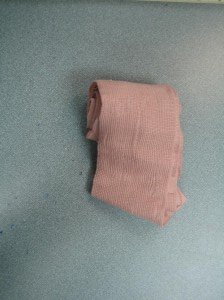Having an on-hand first aid kit will surely come in handy for minor injuries such as wounds and scrapes. Even though you can readily purchase one in drug stores, you can easily create your own kit.
A suitable container as your kit
When creating your first aid kit, the first step is to choose a container that is portable and accessible. Just make sure that it is big enough to store all the basics. In most cases, a small tackle box can be used as a suitable first aid kit or utilize a re-sealable freezer bag. Try to consider first the type of kit you plan to build and where it will be stored.
Where to keep your first aid kit
In some circumstances, first aid kits can end up in places out of reach during emergencies such as in the garage, in the backyard or even in the attic.

It is vital to store your first aid kit in a central location to ensure that it is readily accessible during minor or major emergencies. Always remember that it is best to maintain 2 different first aid kits – one at home and another in the vehicle. With more than just one kit, it simply means that one is readily available at all times. Practical areas in the house to store your first aid kit include the following:
- Kitchen cabinet
- Bathroom cabinet
- Workshop
- Vehicle (glove compartment for easy accessibility)
Vital item for a first aid kit in a car or boat
When creating a first aid kit for your boat or car, an essential item that should be available is a cellular phone. Remember that there is no other tool that is vital in case of emergencies. In case you could not access emergency medical services, your boat or car first aid kit is not considered complete.
The cellular phone should have enough battery power to turn it on, but you do not need a current contract with a service provider to call for emergency assistance.
You can utilize an old cell phone that is no longer used and put it inside your first aid kit for emergencies. In case you do not have an old cell phone available, you can easily find an old or unused cell phone in the market today.
Medical information
Even though not part of your first aid kit, anyone who has a medical condition must have his/her medical information readily accessible at all times. There are various ways to organize the medical information and make it readily available to the rescuers.
Other items for your first aid kit
- Medications (ibuprofen, acetaminophen)
- Alcohol wipes
- Tweezers
- Medical adhesive tape
- Antiseptic hand cleanser
- Elastic bandages
- Sterile gauze
- Insect bite swabs
- Adhesive bandages in various sizes
- Hydrogen peroxide
- Triple-antibiotic ointment
- Exam gloves
- Bandage scissors
- Barrier device for CPR
- Instant cold packs
- Triangular bandages
Having a first aid kit on-hand at all times will surely come in hand during emergencies whether minor or major ones. Just remember that you will stock up on all the essentials and replace those that have been used.
